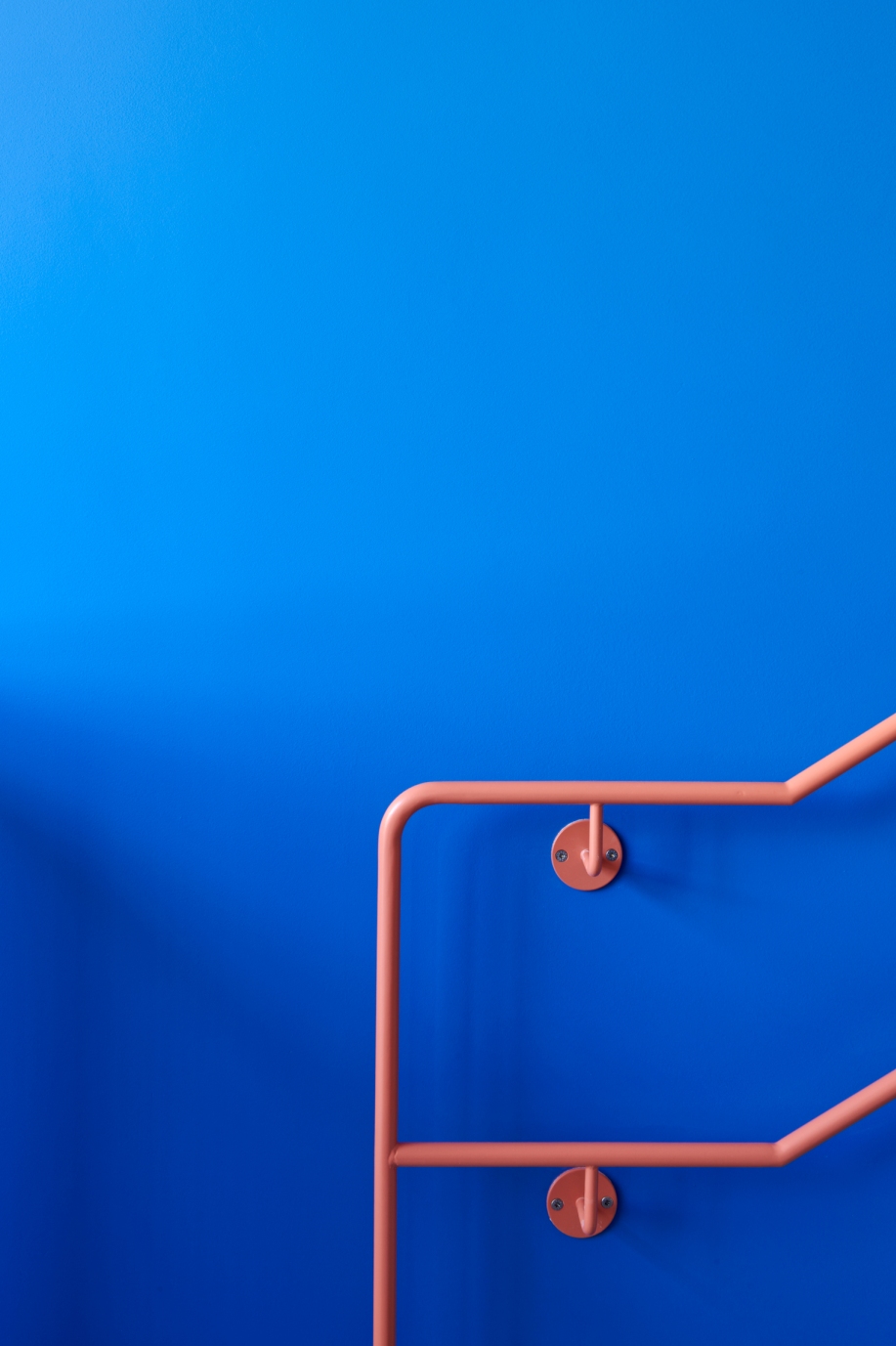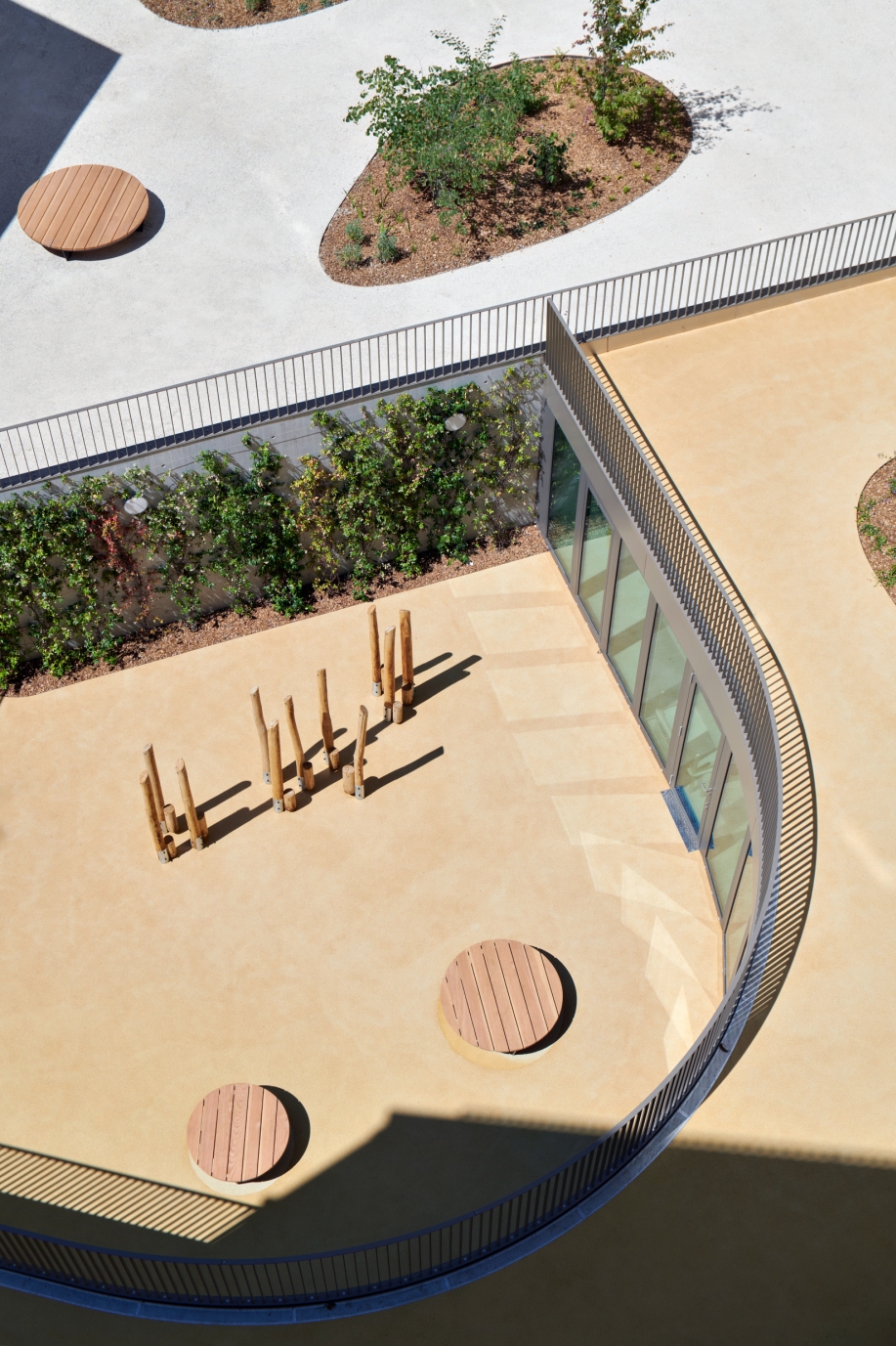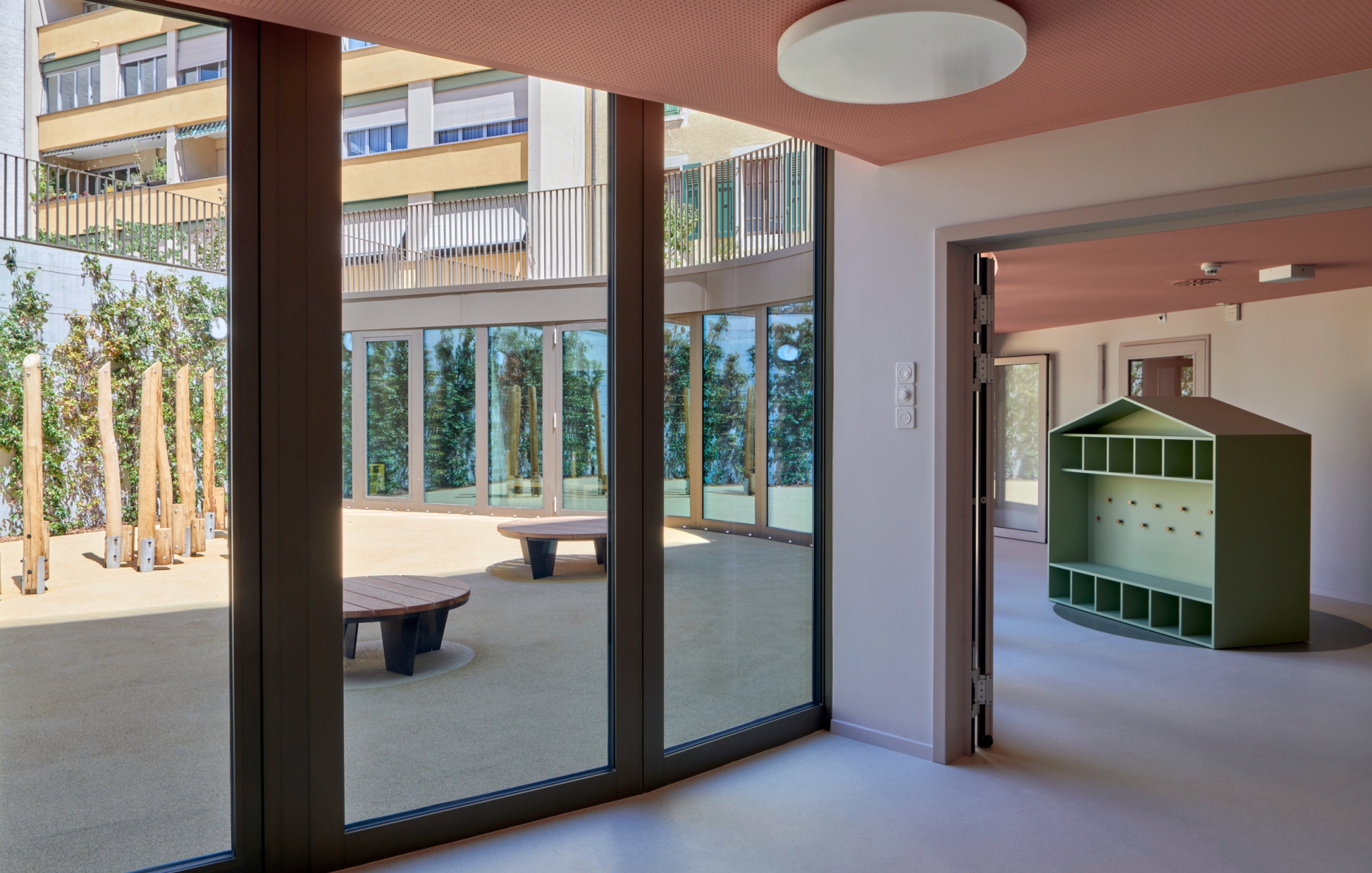EGLANTYNE JEBB
New crèche in Geneva integrated into a new building
A crèche that explores the potential of the city's subsoil
In the Eaux-Vives district of Geneva, a street-front building forms a bulwark against the hustle and bustle of the city. In its base, a crèche designed by Corpus architecture welcomes toddlers, develops and is organised at the rear in the courtyard basement, protecting the children from the effects of heat waves.
At the Eglantyne Jebb crèche, babies are welcomed as soon as their maternity leave is over. They leave the nursery at the age of four at the latest, when they are potty-trained, can eat on their own, can move around easily and, for the more daring, can talk at length. Every morning, the parents head for the small side of the building, along the venerable Temple des Eaux-Vives, to enter the courtyard, where they leave their pushchair under a shelter for a few hours. They then enter the building and go to one of the three levels to drop off their child. The toddlers are organised by age, with their own areas to play and rest, complete with changing rooms and tiny adjoining toilets.



A crèche that explores the potential of the city's subsoil
In the Eaux-Vives district of Geneva, a street-front building forms a bulwark against the hustle and bustle of the city. In its base, a crèche designed by Corpus architecture welcomes toddlers, develops and is organised at the rear in the courtyard basement, protecting the children from the effects of heat waves.
At the Eglantyne Jebb crèche, babies are welcomed as soon as their maternity leave is over. They leave the nursery at the age of four at the latest, when they are potty-trained, can eat on their own, can move around easily and, for the more daring, can talk at length. Every morning, the parents head for the small side of the building, along the venerable Temple des Eaux-Vives, to enter the courtyard, where they leave their pushchair under a shelter for a few hours. They then enter the building and go to one of the three levels to drop off their child. The toddlers are organised by age, with their own areas to play and rest, complete with changing rooms and tiny adjoining toilets.
In the earth matrix
A courtyard dug into the basement lets toddlers experience natural events such as rain and wind. Regular outings allow young children to explore the world and soothe themselves in a quieter outdoor environment. Thanks to the rounded shape of a glass wall, the courtyard forms a central point towards which all eyes converge, a landmark for measuring the passing of time and the changing seasons. On the inside, the adjoining rooms allow visual exchanges between the groups through the glass, while respecting the youngest children's sense of security. The basement courtyard is much appreciated by the director of the new children's centre. She sees it as a way of escaping overheated summers, and of ventilating and maintaining a balanced climate inside the structure.
Two superimposed terraces
Despite the limited space of the plot, two courtyards are dedicated to outdoor motor activities. The second is located one floor higher, on the slab that leads to the entrance and forms the roof of level -1 of the crèche. Visual links are established between the two terraces, bringing unity and cohesion back to the groups that are usually separated. An island of greenery provides an opportunity to familiarise oneself with the tiny world of insects, not forgetting the tricycle routes that are organised around this spatial reference point. Benches arranged in a ring around a number of oculi, the windows bringing natural light to the lower floor, create giant flowers that punctuate the large terrace.
Playful furniture
While offering a peaceful setting, the architecture of Corpus invites children to take possession of the spaces dedicated to them. It's a serious business, because it's all about progress, acquiring skills and knowledge, even if it's all play. Here, the furniture is designed to support discovery. There are circles, squares and triangles, voids and bumps. Cloakrooms look like huts, coat hooks like bubbles, cupboards like hollows and hiding places. The functionality of the spaces should facilitate the work of the educators. However, it is softened by the invitation given to the children to enjoy the little things in life that punctuate the day. Putting your hat away, organising your shoes and hanging your jacket on the coat hook are the beginning of a successful day when fun is involved. Repeated action improves coordination, and the good humour that accompanies it leads to success. The furniture, with its unusual shapes, piques the child's curiosity and encourages play.




Just a few colours
To accompany the life that emerges within its walls, Corpus proposes to infuse a neutral white with two complementary colours, green and red. The colours come in soft monochrome shades, including an old pink that adorns the acoustic ceiling and unifies the living areas on all three levels. It is set against a soft green that enlivens most of the furniture. In one of the rooms, a silhouette made up of simple shapes is painted on the walls. It responds to the children's imagination and supports their desire to dream. In the bathroom, the two colours running side by side give the space a stronger identity. There are also a few touches of sky blue here and there on the furniture. The bright, sparkling ultramarine blue chosen for the stairwell may come as a surprise in a setting that is always composed of delicate flat tones. It contrasts with the very restrained expression applied elsewhere in the nursery, and forms a language of its own. The immersive effect it creates offers children a different way of experiencing the space in which they are placed. Could its expressive nature be a better response to the strength of the emotions that toddlers go through in their lives?
A pioneer in children's rights
The new crèche is dedicated by the city to Eglantyne Jebb, a philanthropist and pioneer of children's rights. The Englishwoman, who dreamed of protecting children from the suffering of war, drafted the Geneva Declaration on the Rights of the Child in 1924. This was to launch the idea of a legal document, the adoption of a Convention on the Rights of the Child approved by the United Nations. Her ideas were innovative for the time. During her trip in 1913 to the Balkans, a region inflamed by armed conflict, she noticed that children were the first victims. In 1919, together with her sister, she founded Save The Children, which today has become the world's leading children's rights organisation. With such an exceptional patron, the crèche had to live up to the occasion.



Images Ariel Huber et Tonatiuh Ambrosetti
